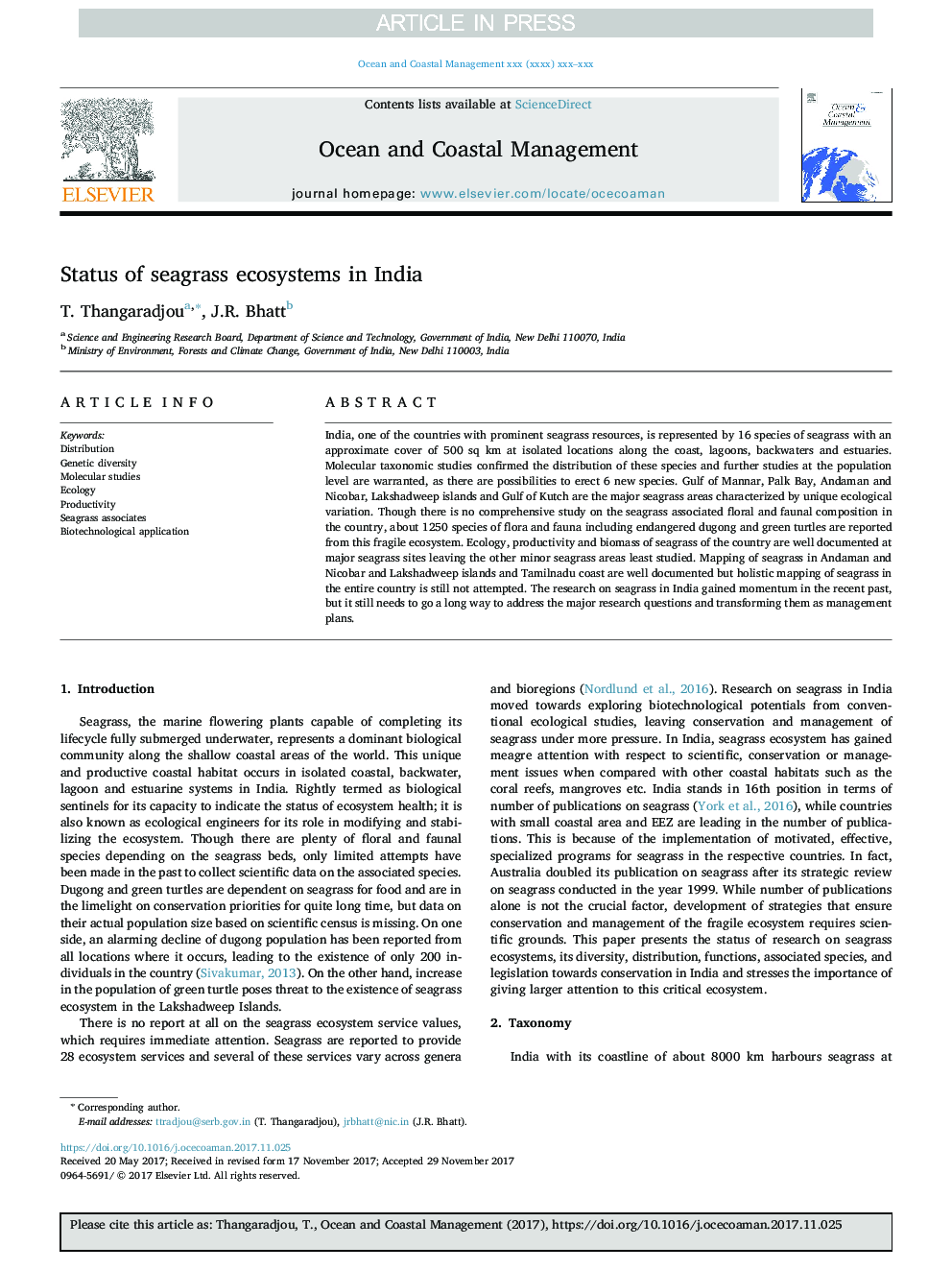| Article ID | Journal | Published Year | Pages | File Type |
|---|---|---|---|---|
| 8060667 | Ocean & Coastal Management | 2018 | 9 Pages |
Abstract
India, one of the countries with prominent seagrass resources, is represented by 16 species of seagrass with an approximate cover of 500 sq km at isolated locations along the coast, lagoons, backwaters and estuaries. Molecular taxonomic studies confirmed the distribution of these species and further studies at the population level are warranted, as there are possibilities to erect 6 new species. Gulf of Mannar, Palk Bay, Andaman and Nicobar, Lakshadweep islands and Gulf of Kutch are the major seagrass areas characterized by unique ecological variation. Though there is no comprehensive study on the seagrass associated floral and faunal composition in the country, about 1250 species of flora and fauna including endangered dugong and green turtles are reported from this fragile ecosystem. Ecology, productivity and biomass of seagrass of the country are well documented at major seagrass sites leaving the other minor seagrass areas least studied. Mapping of seagrass in Andaman and Nicobar and Lakshadweep islands and Tamilnadu coast are well documented but holistic mapping of seagrass in the entire country is still not attempted. The research on seagrass in India gained momentum in the recent past, but it still needs to go a long way to address the major research questions and transforming them as management plans.
Keywords
Related Topics
Physical Sciences and Engineering
Earth and Planetary Sciences
Oceanography
Authors
T. Thangaradjou, J.R. Bhatt,
